After the Battles of Lexington and Concord, General Thomas Gage found himself bottled up in the Boston peninsula. Dr. Joseph Warren and other patriot leaders had successfully snuffed out the British plan to march to Concord and alarmed their army of militia and Minutemen to fight the British and now began to dig in for a siege of Boston.
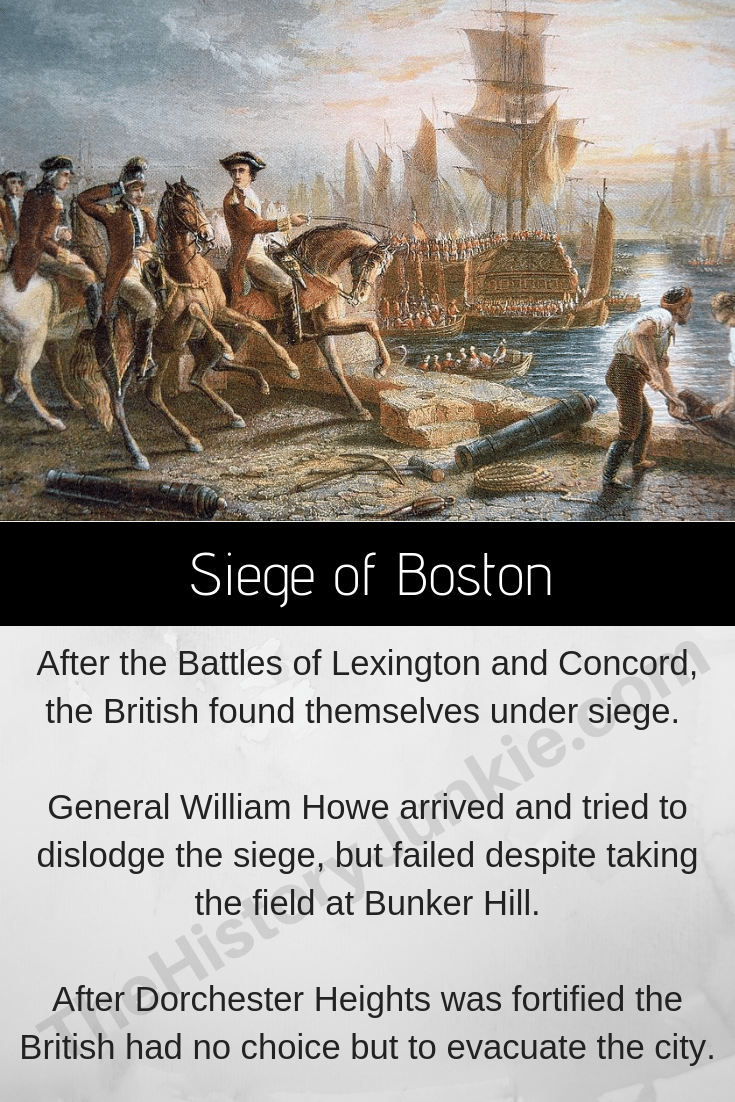
This siege would last for over a year and, by its end, give birth to the Continental Army.
Background
The Battles of Lexington and Concord was a disaster for the British. They were up against a larger enemy who held all of the high ground around them. An assault on the provincial positions would destroy their army and allow the rebels to overrun them.
Instead of attacking, Gage prepared a defense and was able to end the rebel advance, but each day that was becoming harder.
Each day, new recruits joined the ranks of the men in the siege of Boston. Men from Connecticut, Rhode Island, New Hampshire, and even Pennsylvania began to arrive in Boston with the belief that they could drive the British from their country.
The siege line continued to widen, and Gage was helpless to stop it. He had no choice but to wait for reinforcements, which would take months.
His reinforcements arrived with a new commander-in-chief, the distinguished Sir William Howe, who was a crafty tactician. He arrived with a large force and planned to take and fortify Bunker Hill and Dorchester Heights.
The rebels caught wind of the British plan and began to plan their own counter. Under the command of William Prescott, Israel Putnam, and John Stark, the rebels would take Breed's Hill and build a redoubt.
It was an aggressive move that left the rebels vulnerable; if the British chose to use it, they would not.
Battle of Chelsea's Creek
Full Article: Battle of Chelsea Creek
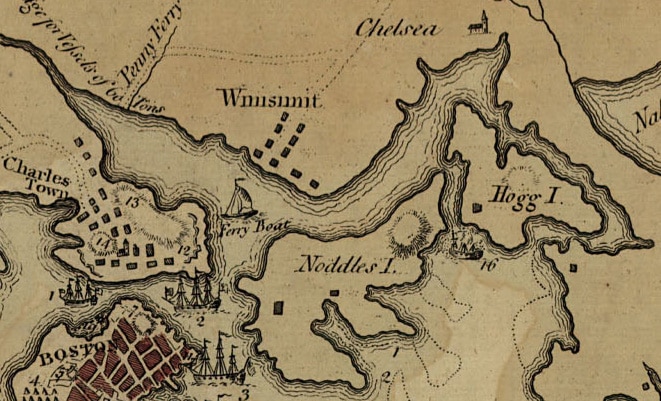
Reinforcements continued to pour into provincials, and other commanders began to distinguish themselves. After the Battles of Lexington and Concord, the morale of the provincial militia was high, and the British began to fear military action against Noddle Island.
Vice-Admiral Graves, acting on this intelligence, began to place guards on Noddle Island. The amount he placed is disputed.
John Stark and his men from New Hampshire forded Chelsea Creek to cross over into Hog Island. Once here, he began to move livestock and supplies to the mainland. He sent a small detachment across the river into Noddle Island.
Here, his small detachment set ablaze haystacks and barns and killed much livestock. The British noticed the billows of smoke and sent a detachment of marines to drive the rebels off.
The rebels continued to retreat until they found a strong defensive position and began to fire back. They broke the British push and inflicted some casualties. Stark men slipped across the river into Hog Island and then moved across Chelsea Creek.
Once across, Vice-Admiral Graves moved the HMS Diana towards the rebel position. Diana met disaster and was forced to abandon. Israel Putnam then led 1,000 men to board the Diana and raid it.
They plundered guns, money, food, and artillery. These pieces would be used at Bunker Hill.
Battle of Bunker Hill
Full Article: Battle of Bunker Hill
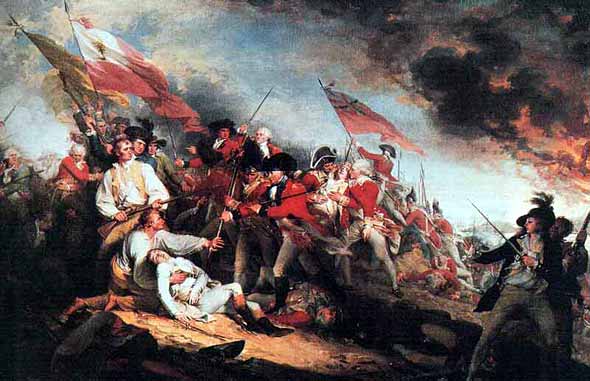
General Artemis Ward was given orders by the Committee of Safety to fortify Dorchester Heights and Bunker Hill. He ordered Colonel William Prescott to fortify Bunker Hill and construct a redoubt.
Other officers who came with Prescott were Israel Putnam and John Stark. Prescott fortified Bunker Hill and then, in a daring move, fortified Breed's Hill. Breed's Hill was much closer to the British line and would provoke an attack.
On June 17, General William Howe ordered a frontal assault on Breed's Hill to take the Charlestown peninsula. The British sustained heavy losses and were pushed back twice before taking the hill after the rebels were forced to retreat when they ran low on ammunition.
Dr. Joseph Warren was killed during the battle, as was Major John Pitcairn. The losses sustained at the Battle of Bunker Hill made the British victory short-lived. They ended up falling back and found themselves unable to drive the colonists from Dorchester Heights.
With the exception of a few skirmishes, the siege was at a stalemate.
The Capture of Fort Ticonderoga
Read Article: Capture of Fort Ticonderoga
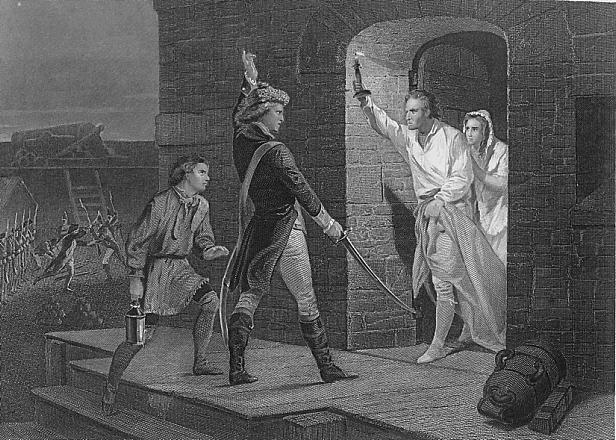
Meanwhile, another American official sought to help the American cause by capturing Fort Ticonderoga and supplying the Continental Army with much-needed artillery.
Benedict Arnold was given a colonel's commission by the Massachusetts Committee of Correspondence and began to make his way to the fort. Around that same time, Ethan Allen recruited his Green Mountain Boys with the same intention.
The capture of the fort was easy since those guarding it did not know of the events at Lexington and Concord or Breed's Hill.
The men surrounded the fort and captured it without a shot being fired. The victory was quick and decisive and gave the American's control of the St. Lawrence River and stores of heavy artillery. These stores would play a significant role at Dorchester Heights.
Formation of the Continental Army
Full Article: Continental Army
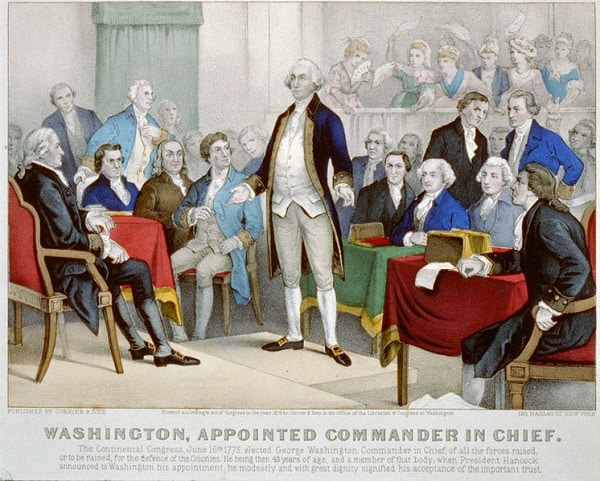
After the Battle of Bunker Hill, the Continental Congress was faced with a decision. Do they recognize the men of New England as the Continental Army, or do they allow Massachusetts to act as a separate colony?
The issue of independence was still hotly debated, and the main advocate for reconciliation, John Dickinson, was a great orator and influential.
John Adams then motioned to nominate a commander-in-chief for the Continental Army. Many believed his nomination would be John Hancock or some other man from Massachusetts, but Adams knew that to win the argument for independence, he must have the support of Virginia.
In a brilliant political move, he nominated George Washington. The Congress was stunned, and although divided for independence, they all supported the nomination.
Washington arrived in Boston and began organizing the Continental Army into an actual army rather than a gaggle of militia groups.
Fortification of Dorchester Heights
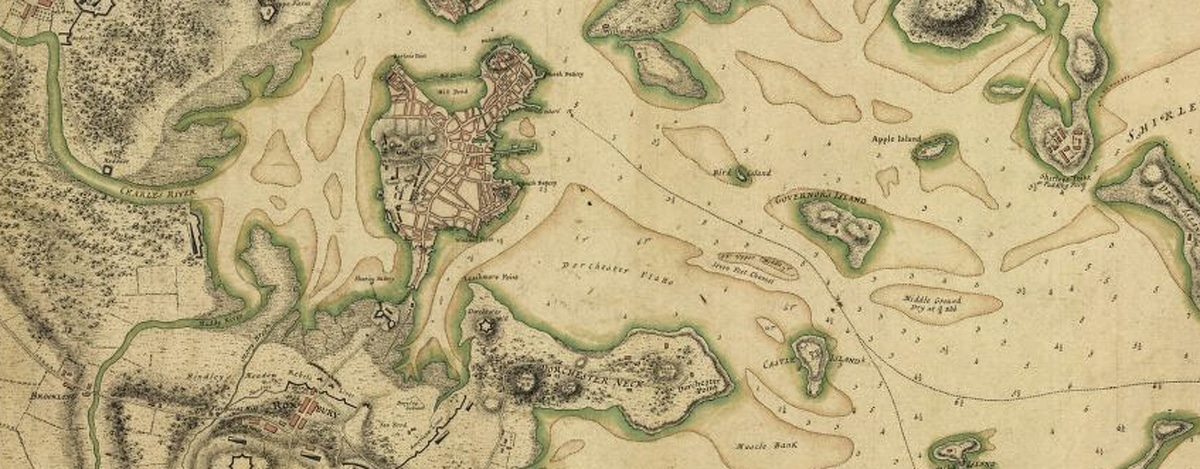
One of Washington's young generals was the hefty Henry Knox, who devised a plan to bring the heavy artillery from Fort Ticonderoga to Boston.
Once there, the Continental Army could dislodge the British from Boston and force them to assault the hill or leave the city. The march was a struggle, but the result was a positive one for the Americans.
With heavy artillery, Washington prepared for battle with the British.
On the eve of the anniversary of the Boston Massacre, Washington and his men began to fortify the city. It would become one of the greatest military feats of the war as militiamen laid bails of hay in front of the artillery to soften the noise.
Throughout the night, the men cut down trees and created fortifications that would give strong cover against British artillery, grape shot, and musket fire.
Howe awoke the next morning to the site of the Continental Army in a deadly position above him. They commanded the town, and Howe was forced to make a decision. He contemplated an assault on Dorchester Heights but did not want to repeat the massacre that happened at Bunker Hill.
If he would have made that assault, then the war may have ended before it began as Washington was prepared to make a counter-attack on Cambridge, and the fortifications at Dorchester were stronger than Bunker Hill, and the guns were deadlier.
A letter arrived to General Washington from General Howe that stated he would be leaving Boston and that if his men were molested in their retreat, he would burn the town to the ground. Washington obliged, and Howe left Boston.
The siege was over.
